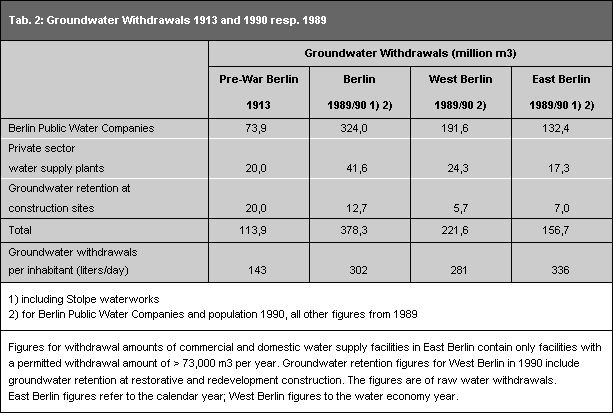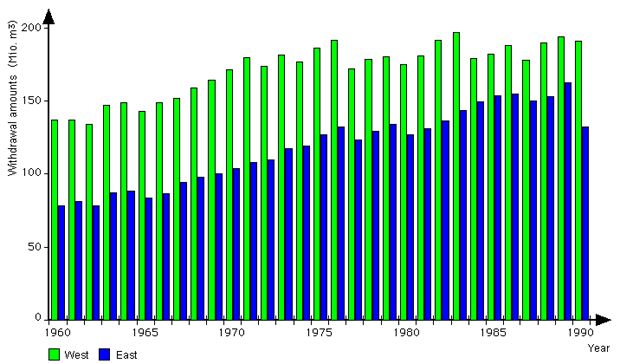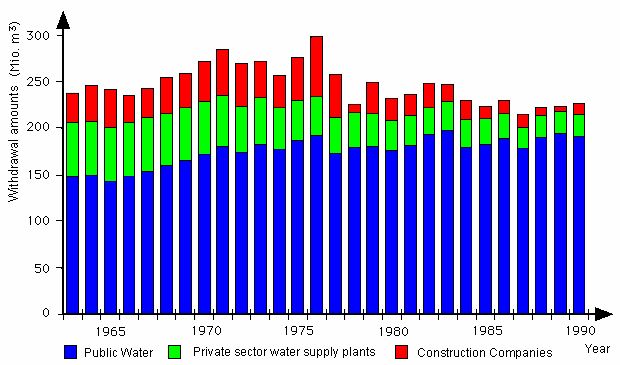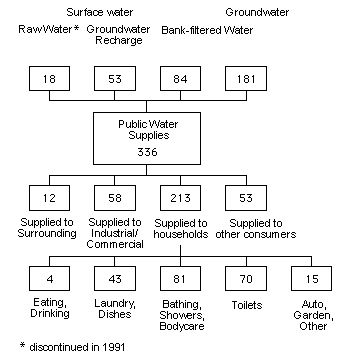The Berlin Public Water Companies waterworks are located mainly in the Berlin Pleistocene watercourse. Private sector water supply plants are located throughout the city.
The Teufelsee (see = lake) waterworks was closed in 1970. The gallery section at Nikolassee is not in operation either. Current water quality is too poor at parts of the Wuhlheide waterworks west gallery, at the Alte Königsheide gallery, at the Teltow canal in Johannistal and at 6 wells of the Jungfernheide waterworks. Therefore no water is being withdrawn.
The Stolpe waterworks is located to the North, just outside the city limits. It is operated by the Berlin Public Water Companies and serves the drinking water supply of Berlin and a few nearby communities in the state of Brandenburg. The protection areas of the Staaken, Eichwalde and Erkner waterworks, which serve communities in the vicinity of Berlin, are located both inside and outside Berlin.




